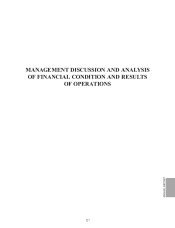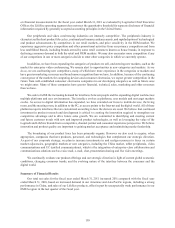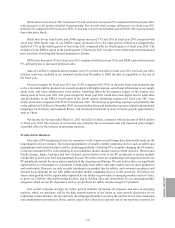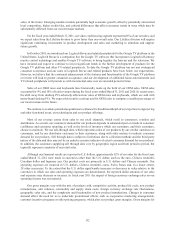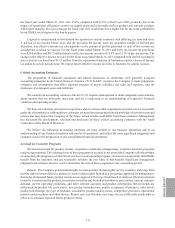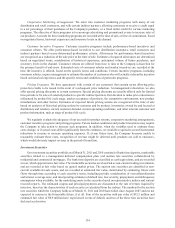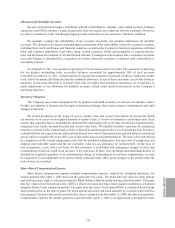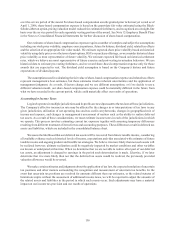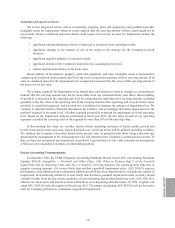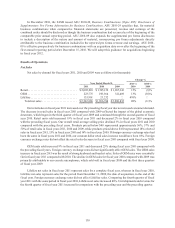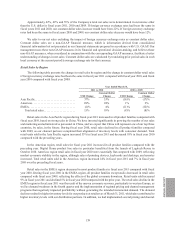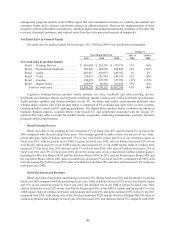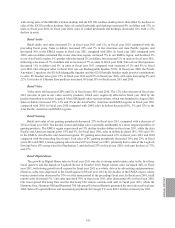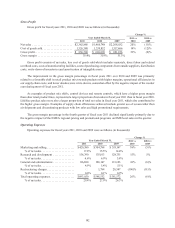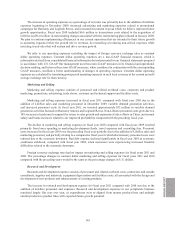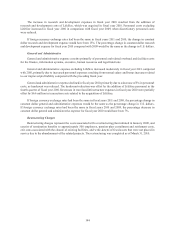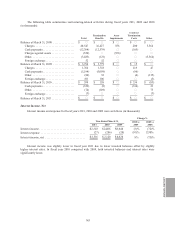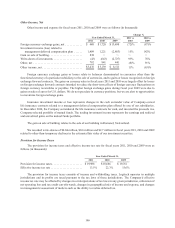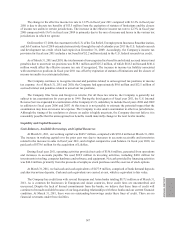Logitech 2011 Annual Report Download - page 149
Download and view the complete annual report
Please find page 149 of the 2011 Logitech annual report below. You can navigate through the pages in the report by either clicking on the pages listed below, or by using the keyword search tool below to find specific information within the annual report.
ANNUAl REPORT
137
Valuation of Long-Lived Assets
We review long-lived assets, such as investments, property, plant and equipment, and goodwill and other
intangible assets for impairment whenever events indicate that the carrying amount of these assets might not be
recoverable. Factors considered important which could require us to review an asset for impairment include the
following:
• significant underperformance relative to historical or projected future operating results;
• significant changes in the manner of use of the assets or the strategy for the Company’s overall
business;
• significant negative industry or economic trends;
• significant decline in the Company’s stock price for a sustained period; and
• market capitalization relative to net book value.
Recoverability of investments, property, plant and equipment, and other intangible assets is measured by
comparing the projected undiscounted cash flows the asset is expected to generate with its carrying amount. If an
asset is considered impaired, the impairment to be recognized is measured by the excess of the carrying amount of
the asset over its fair value.
We evaluate goodwill for impairment on an annual basis and whenever events or changes in circumstances
indicate that the carrying amount may not be recoverable from our estimated future cash flows. Recoverability
of goodwill is measured at the reporting unit level by comparing the reporting unit’s carrying amount, including
goodwill, to the fair value of the reporting unit. If the carrying amount of the reporting unit exceeds its fair value,
goodwill is considered impaired, and a second test is performed to measure the amount of impairment loss. We
continue to maintain discrete financial information for LifeSize, and accordingly determine impairment for the
goodwill acquired at the entity level. All other acquired goodwill is evaluated for impairment at a total enterprise
level. Based on the impairment analyses performed in fiscal year 2011, the fair value of each of our operating
segments exceeded the carrying value of the segment by more than 50% of the carrying value.
In determining fair value, we consider various factors including estimates of future market growth and
trends, forecasted revenue and costs, expected periods over which our assets will be utilized, and other variables.
We calculate the Company’s fair value based on the present value of projected cash flows using a discount rate
determined by management to be commensurate to the risk inherent in the Company’s current business model. To
date, we have not recognized any impairment of goodwill. Logitech bases its fair value estimates on assumptions
it believes to be reasonable, but which are inherently uncertain.
Recent Accounting Pronouncements
In December 2010, the FASB (Financial Accounting Standards Board) issued ASU (Accounting Standards
Update) 2010-28, Intangibles — Goodwill and Other (Topic 350): When to Perform Step 2 of the Goodwill
Impairment Test for Reporting Units with Zero or Negative Carrying Amounts. For reporting units with zero or
negative carrying amounts, if it is more likely than not that a goodwill impairment exists, ASU 2010-28 requires
performance of an additional test to determine whether goodwill has been impaired and to calculate the amount of
impairment. In determining whether it is more likely than not that a goodwill impairment exists, an entity should
consider whether there are any adverse qualitative factors indicating that an impairment may exist. ASU 2010-28 is
effective for fiscal years and interim periods within those years beginning after December 15, 2010. Logitech will
adopt ASU 2009-28 in the first quarter of fiscal year 2012. The impact of adopting ASU 2010-28 will not be known
until the Company performs its evaluations of goodwill impairment.


